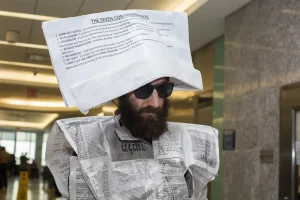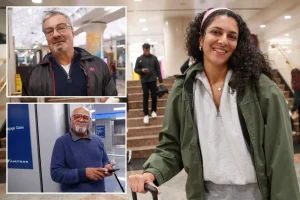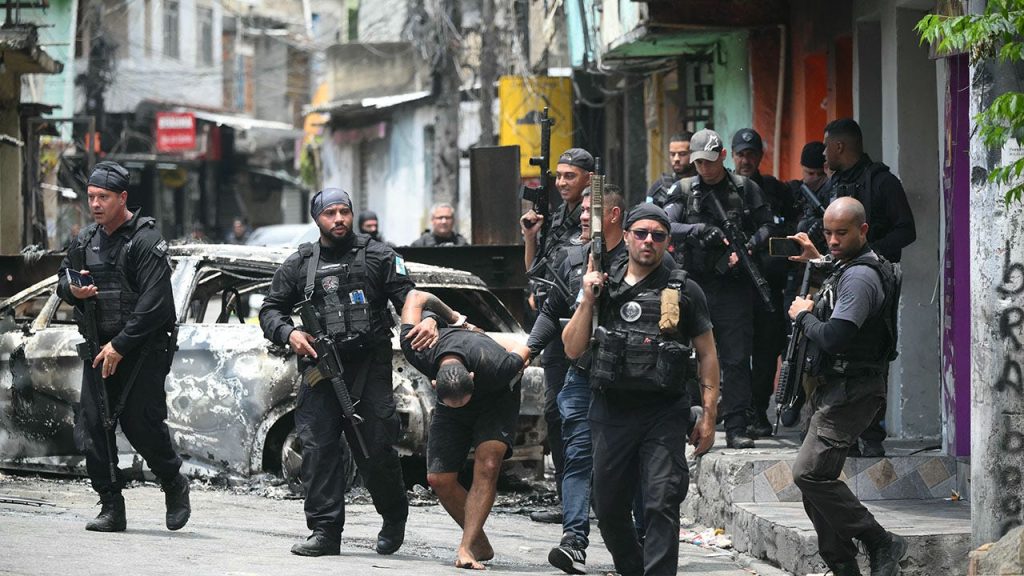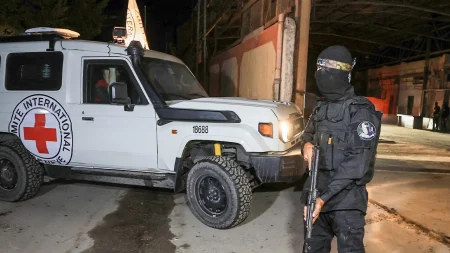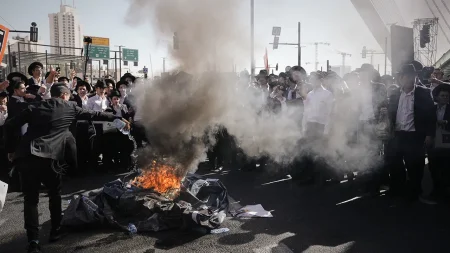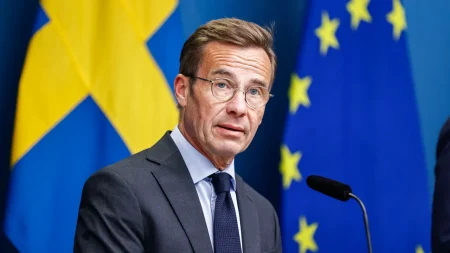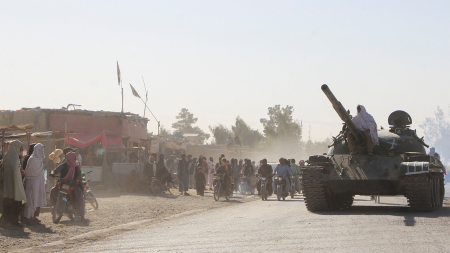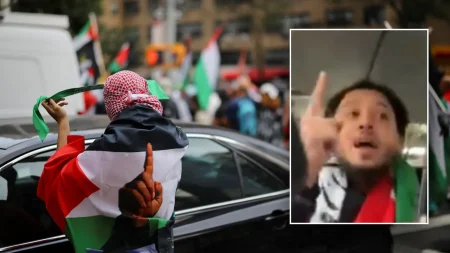A Deadly Police Operation in Rio’s Favelas
In a staggering show of force that has shocked Brazil and the international community, at least 132 people lost their lives during a massive police raid in Rio de Janeiro on Tuesday. Among the dead were four law enforcement officers, making this operation the deadliest in Rio’s history. The raid targeted the powerful drug organization known as Comando Vermelho (Red Command), which controls vast areas of the city’s favelas—impoverished neighborhoods where organized crime has established deep roots. While Rio state Governor Cláudio Castro initially reported 58 deaths, he acknowledged this number would likely increase as forensic work continued. This devastating confrontation has once again highlighted the complex and often violent relationship between Brazil’s security forces and the criminal organizations that maintain control over large portions of urban areas.
The scale of violence during the operation reveals the extraordinary measures both sides employed. According to authorities, gang members utilized drones to drop explosives on police officers, demonstrating the sophisticated tactics employed by criminal organizations. “This is how the Rio police are treated by criminals: with bombs dropped by drones. This is the scale of the challenge we face. This is not ordinary crime, but narco-terrorism,” Governor Castro stated. The police response was equally forceful, with the governor defending the operation by claiming that the confrontation occurred primarily in wooded areas rather than residential zones, suggesting those killed were likely not innocent bystanders. “To be quite honest with you, the conflict wasn’t in a built-up area—it was all in the woods,” Castro explained. “So I don’t believe anyone was just strolling in the woods on a day of conflict. And that’s why we can easily classify them.”
The human toll of this operation extends beyond the raw numbers. Four law enforcement officers—Marcus Vinícius Cardoso de Carvalho, Rodrigo Velloso Cabral, Cleiton Serafim Gonçalves, and Heber Carvalho da Fonseca—lost their lives during the raid. Governor Castro paid tribute to them, stating they “gave their lives fulfilling the duty to protect the Fluminense population.” Meanwhile, Brazilian President Luiz Inácio Lula da Silva expressed shock over the killings and raised questions about coordination between different levels of government, noting his surprise that the federal government hadn’t been informed about the raid beforehand. This disconnect highlights potential issues in Brazil’s approach to fighting organized crime, where communication between federal and state authorities appears strained despite the national significance of such large-scale operations.
Governor Castro defended the raid as a carefully planned operation, stating on social media that it had been in development for more than two months following a year-long investigation. “The scenario encountered was the one that had been anticipated,” he wrote, suggesting that authorities were prepared for significant resistance. By Wednesday, his office reported substantial results from the operation: 113 people arrested, 10 teenagers detained, and a massive seizure of weapons and drugs, including 91 rifles, 29 pistols, 14 explosive devices, and one ton of cocaine. These figures demonstrate the significant resources that criminal organizations have accumulated in Rio’s favelas, where they often operate as parallel powers to the state, controlling territory and providing services the government fails to deliver.
The raid takes place against a backdrop of ongoing violence and poverty in Rio’s favelas, where residents are frequently caught between powerful drug gangs and aggressive police tactics. Many of these neighborhoods have endured decades of neglect by the Brazilian government, creating conditions where criminal organizations can recruit from a population with limited economic opportunities. The gangs often provide a form of security and social services to residents while simultaneously subjecting them to violence and exploitation. Police operations in these areas have long been criticized by human rights organizations for their high civilian casualty rates and apparent disregard for the safety of innocent residents. While authorities insist this particular raid targeted only criminal elements, the staggering death toll raises questions about proportionality and the protection of civilian life.
This deadly confrontation has reignited intense debate within Brazil about police tactics, human rights concerns, and the government’s strategy for addressing entrenched criminal organizations. Critics argue that militarized approaches to policing favelas have failed to produce lasting security improvements while causing significant harm to communities. They advocate for comprehensive investment in education, healthcare, and economic development as more sustainable solutions to the complex problems faced by these neighborhoods. Meanwhile, supporters of aggressive policing contend that the sophisticated weaponry and tactics employed by groups like the Red Command require equally forceful responses from authorities. As Brazil continues to grapple with these issues, the residents of Rio’s favelas remain caught in a seemingly endless cycle of violence, with Tuesday’s raid representing yet another tragic chapter in this ongoing struggle. The question remains whether this operation, despite its unprecedented scale and toll, will meaningfully alter the balance of power in Rio’s most vulnerable communities.

